Help Beed’s Farmers Return to Their Fields — Donate Now to #ReviveARiver & Restore Their Lives
It’s almost as if nature dipped her brush in just two colours while working on the Pachegaon village in Maharashtra’s Beed: there’s the vibrant green — fields of jowar (sorghum), bajra (pearl millet) deck the landscape, and the more subdued browns in pockets where the crop has dried out, or wasn’t grown at all. While the villagers love the green, in the recent past, they’ve watched disappointed as it’s traded places with the browns. The people’s disappointment is mirrored in the cracked soil, the parched rivers, and the sweltering heat that grips their village, threatening to dry everything in sight.
It’s easy to point a finger at the droughts that plague Marathwada — a region that spans Aurangabad, Beed, Jalna, Latur, Nanded, Osmanabad, Parbhani, and Hingoli. After all, in 2019 alone, over 151 talukas were officially declared drought-hit.
But in Pachegaon, the villagers say it’s not just the lack of rain that has brought them to this point. The rivers that once sustained their fields are now clogged with silt and stone, too damaged to hold or absorb the rain when it does come. The water rushes away before sinking in, leaving the soil dry and lifeless.
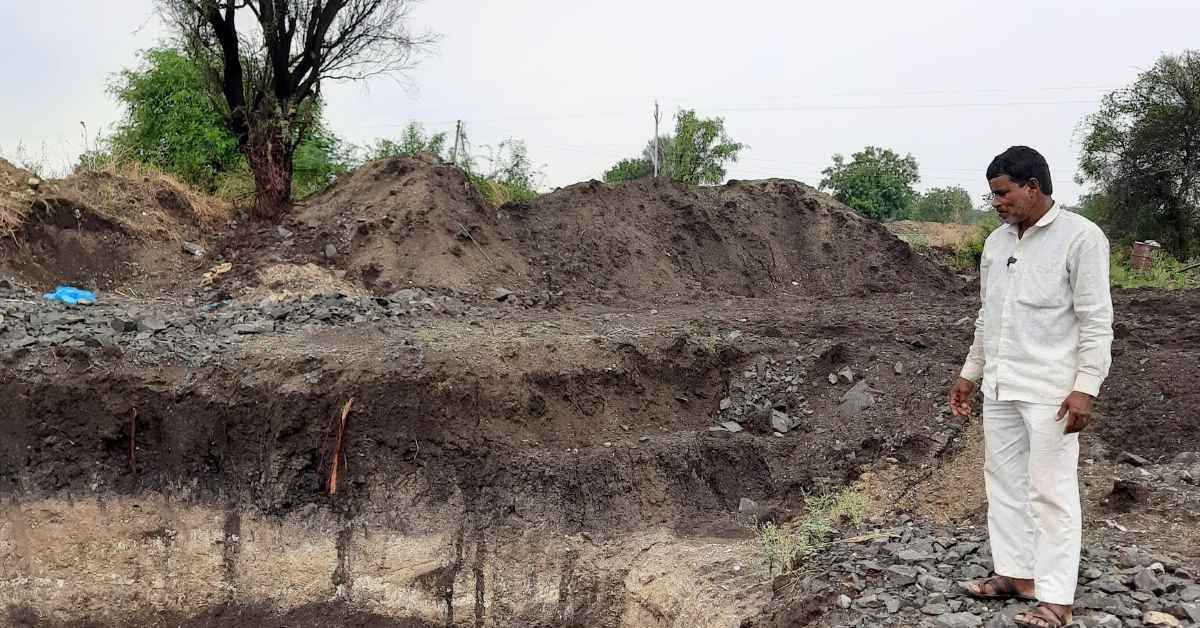 Asharam Govardhan Rathod is a farmer but has been a victim of the drought-like conditions in Pachegaon
Asharam Govardhan Rathod is a farmer but has been a victim of the drought-like conditions in Pachegaon
By the end of the monsoon, the ground still hasn’t had its fill. Wells run dry, borewells draw nothing, and water tanks in homes remain empty for days. Crops begin to wither just weeks after being planted. Year after year, families watch their land give them less, no matter how hard they work. They are exhausted from fighting for water that never seems to stay.
This ripples into a slew of problems. As Durga Mukund Rathod, a farmer, shares, “The fact that we receive rainfall but we cannot use it for a long time, troubles us. Our borewell runs 300 feet deep. If only it could capture the water in the ground, we wouldn’t have any problems.”
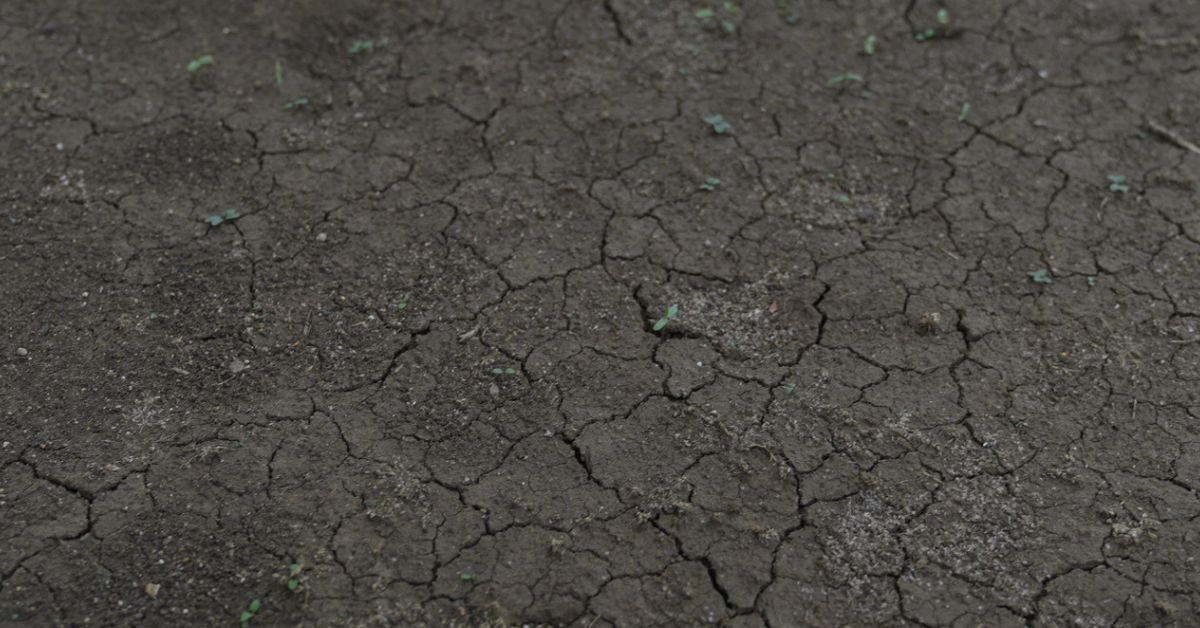 The people’s disappointment is mirrored in the cracked soil, the parched rivers, and the sweltering heat that grips their village, threatening to dry everything in sight
The people’s disappointment is mirrored in the cracked soil, the parched rivers, and the sweltering heat that grips their village, threatening to dry everything in sight
Dr. Sumant Pande, water expert advisor with Nabhangan Foundation, ex-executive director, water literacy centre YASHADA, Pune and founder Nadi Ki Pathshala, who is now closely working with people of Pachegaon to tackle the water crisis, interjects with the solution, “We want to improve the carrying capacity of the rivers.” Pande has spent the last decade studying the effect of various environmental variables on the soil’s water holding capacity.
 The people of Pachegaon are forced to work as migrant labourers in sugarcane fields across India despite having farming land
The people of Pachegaon are forced to work as migrant labourers in sugarcane fields across India despite having farming land
The solution, he says, lies in recharging groundwater. “Daudte hue paani ko chalna sikhao, chalte hue paani ko rukna sikhao, usko dharti ke pet ke andar daalo (Teach running water to slow down, and collect in the earth’s bowels).” He sees this as the solution to the village’s water woes.
One of the most painful outcomes of Pachegaon’s water crisis has been distress migration — when families are forced to leave their homes not out of choice, but because staying means going hungry. This kind of migration isn’t planned or hopeful; it’s a last resort, driven by failed crops and empty wells.
Over the past decade, as the rivers filled with silt and farming became harder with each passing season, more and more farmers in Pachegaon have had to leave behind their land in search of work elsewhere, often in cities, doing daily-wage jobs far from home, just to survive.
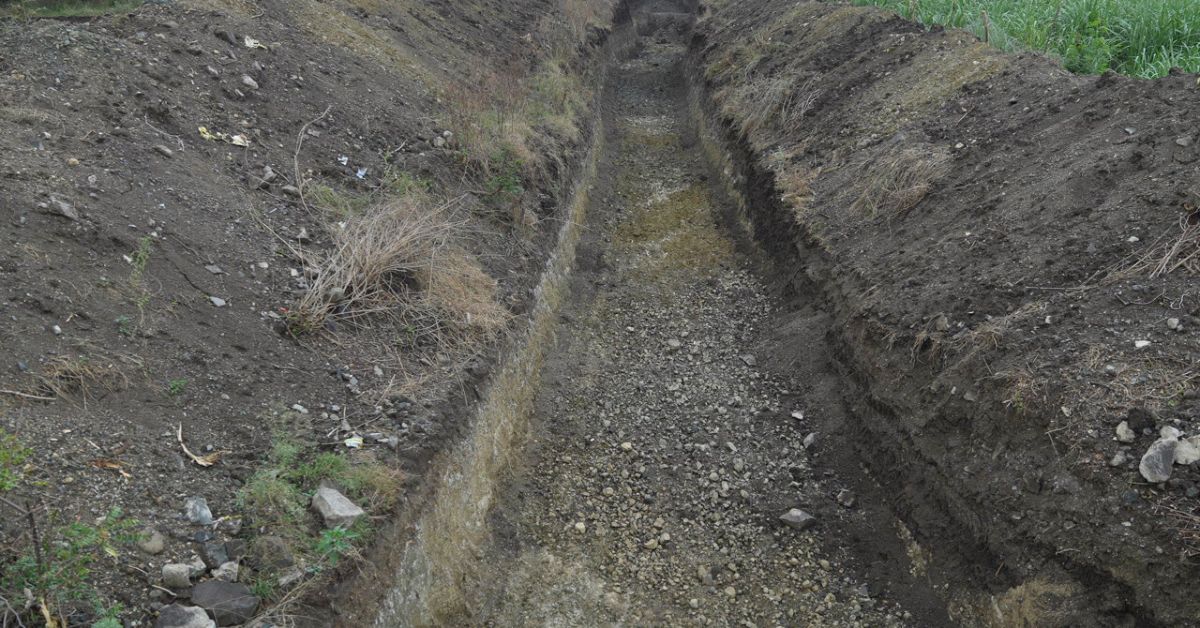 Over the past decade, as the rivers filled with silt and farming became harder with each passing season, more and more farmers in Pachegaon have had to leave behind their land
Over the past decade, as the rivers filled with silt and farming became harder with each passing season, more and more farmers in Pachegaon have had to leave behind their land
But this is the year we flip the script. This is the year we change the reality and, subsequently, the future, of the people of Pachegaon.
Through our campaign, The Better India in collaboration with Nabhangan Foundation — an NGO working to empower villages and make them self-reliant, attempts to challenge an antiquated practice that sees farmers from the Marathwada migrating to far-flung villages in western Maharashtra — sugarcane labour provider districts, where they work as labourers in sugarcane factories for months.
With your help, we want to revive the umbilical link that these farmers share with their lands, so families can stay together, supported by the land they’ve always called home, so the next generation doesn’t see farming as a burden.
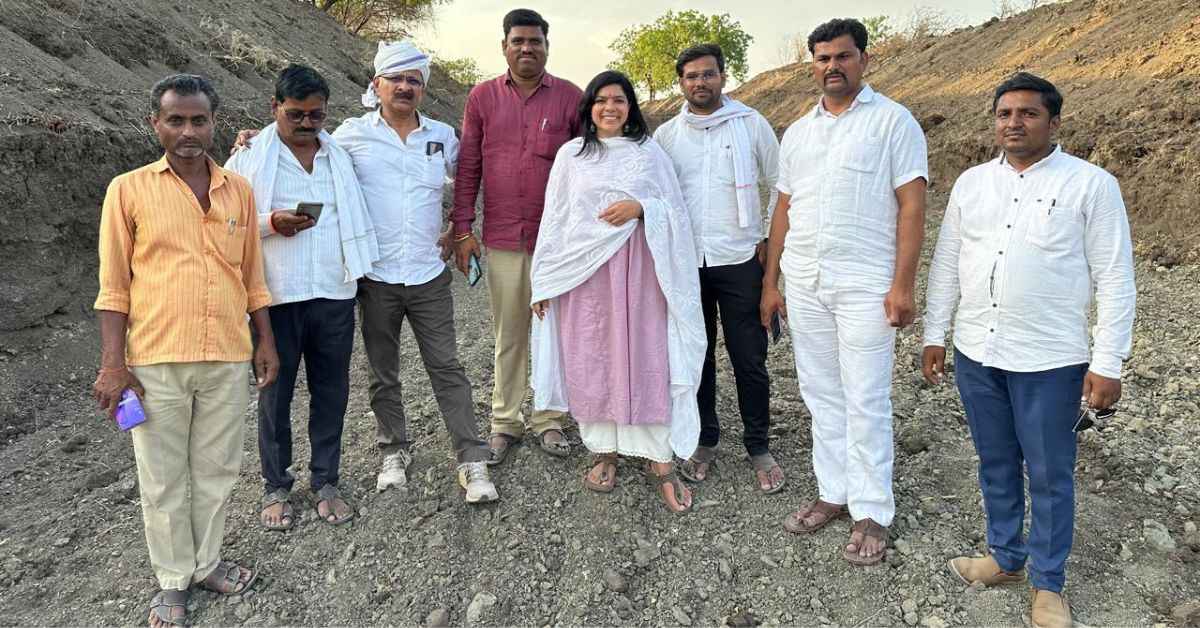 Nabhangan Foundation, led by Rajshri Deshpande (centre) is an NGO working to empower villages and make them self-reliant,
Nabhangan Foundation, led by Rajshri Deshpande (centre) is an NGO working to empower villages and make them self-reliant,
Sarpanch of the village panchayat Vishnu Rathod explains, “Excavating the silt from the river will help us make optimal use of the 650 mm rainfall that we receive. We will be able to irrigate our land.”
The funds will help them amplify the impact they have already been able to create. As Vishnu points out, “The Pachegaon river was dried up and 100 per cent filled with silt, affecting 200 acres of farming. Through excavating the silt, the Bimla River was revitalised.”
 Excavation and widening work have commenced across 4 sq km in Pachegaon village, which will support 1,225 sugarcane-cutting families
Excavation and widening work have commenced across 4 sq km in Pachegaon village, which will support 1,225 sugarcane-cutting families
Distress migration from this village was more than 69 percent; farmers moved to Kolhapur, Pune and other parts of Western Maharashtra, Gulbarga and Karnataka. He adds, “Temporary migration of families decreased from 69 percent to 22 percent in 2023. This ensured that 151 families resumed farming after water revival; distress migration stopped by 51 percent.”
Now, excavation and widening work have commenced across 4 sq km in Pachegaon village, which will support 1,225 sugarcane-cutting families.
And we want to help.
We want to give farmers a reason to stay and to feel that their future still lives in the soil beneath their feet.
Turn labourers into farmers again
While two shades colour the hamlet of Pachegaon inhabited by 450 families, conversations with them reveal many underlying hues. These borrow from the Banjara community’s (a nomadic group) stories, food, dreams and lived experiences.
Take, for instance, Sakshi. The 15-year-old is something of an exemplar; this year, she passed her Class 10 with a distinction. But a sit-down with her underlines the weight of this feat beyond its numerical success. Throughout her schooling years, Sakshi has barely been able to eke out study time, household duties crammed her schedule; Sakshi’s parents are part of the thousands of farmers who migrate from the Marathwada region to parts of western Maharashtra to earn a living through sugarcane cutting.
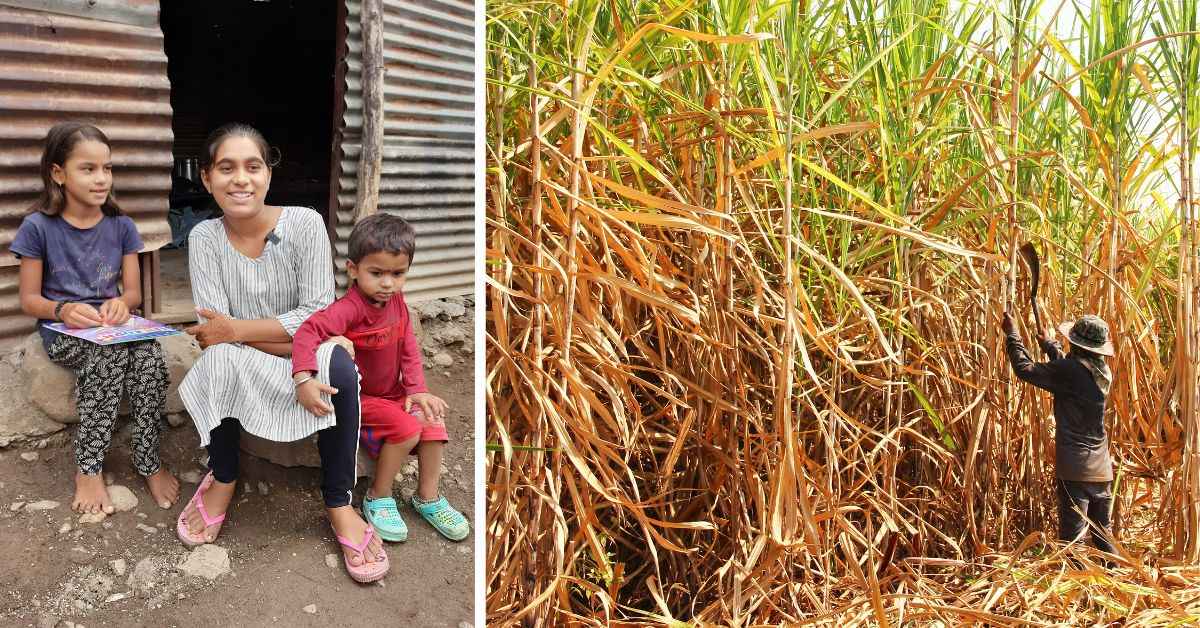 Sakshi and her siblings (L) and the migrant crisis that unfolds with farmers forced to move to sugarcane fields (R)
Sakshi and her siblings (L) and the migrant crisis that unfolds with farmers forced to move to sugarcane fields (R)
This annual migratory cycle — the farmers leave the Marathwada in October and return in March in time to prep their fields for the sowing season — puts a damper on the lives of the children they leave behind. Sakshi and her siblings are victims of this fate. At a young age, Sakshi, who is much older than her two siblings, was forced to assume the role of a mother to them. Their admiration for her is evident; they tag along with her as she washes the utensils, cooks the food and cuts pieces of raw mango that she will be turning into a pickle soon.
While Sakshi loves them, she rues how the home chores ate into her studying time. More study time would probably have translated to a better grade, which would have eased her entry into the police force, a dream she’s harboured for a long time.
She often wishes her parents had stayed back instead of migrating and offloaded some responsibilities from her shoulders.
So why couldn’t they?
Why did they, despite having farmland where they can cultivate jowar and bajra, relegate themselves to a factory where they are at the mercy of a contractor?
Why did the masters of a land with thriving agrarian potential become captives of the system?
These questions are the premise of our campaign. We want to help the people of Pachegaon find the answers through a river that thrives with water and potential.
The problem is multi-pronged, with repercussions seeping into all areas of people’s lives.
This is evident in the story of Jeevika (16), who lost her father when she was little. Her mother and she have followed the jowar and bajra cropping pattern for a year, investing all their savings into making it work.
Last year, the unavailability of water for irrigation decimated their fields, leaving the duo distraught. Jeevika, especially, was inconsolable.
 Jeevika and her mother (L) have a thriving farmland where they grow jowar and bajra, but the lack of irrigation decimates their fields
Jeevika and her mother (L) have a thriving farmland where they grow jowar and bajra, but the lack of irrigation decimates their fields
“I want to become a nurse. For the course, I will have to leave Beed and live in a hostel in Aurangabad. It will be very expensive. My mother has been saving money from agriculture to pay for my studies. But last year, all our savings went into buying produce, which we would have otherwise grown. I don’t know whether I will be able to study nursing,” Jeevika shares.
By joining us in our efforts, you’ll be doing more than helping revive a river; you’ll give these children the agency to dream once more.
Help farmers irrigate hope in the village of Pachegaon
If you visit Beed in October, you’ll most likely see scores of farmers packing their lives into potlis (cloth bags) as they prepare for their sojourn to Kolhapur, and other sugarcane-centric regions of western Maharashtra. They bid their children and the elderly a tearful goodbye, knowing full well the fate they are resigning themselves to for the next few months.
At the sugarcane factories, the farmers live in makeshift shanties, toil for 15-hour stretches — work starts at 4 am and goes on till 7 pm, breaking for lunch in between. Their hands get sore hacking the stem of the cane with the koyta (machete-style knife), following which they bundle the cane, load it onto their heads and carry it to the tractor. While at the site, the workers are expected to see to their medical problems and expenses.
By the end of the season, many farmers return to their villages in Marathwada with around ₹1 lakh in hand — the result of months of exhausting labour. But they don’t just bring back money. They come home carrying fatigue, stress, and many problems.
One of the most worrying among them is the rise in alcoholism. According to Rajshri Deshpande, founder of the Nabhangan Foundation, this isn’t surprising. She points to the long, punishing hours at sugarcane factories and the physical and mental strain that comes with it. “The stench of the sugarcane, the relentless pace of the work — it wears them down,” she explains. With little rest, no comfort, and nothing to look forward to, many workers turn to alcohol as the only escape they can find.
Aside from alcoholism, too, several problems plague the farmers who are slaves to this Mukadam system (temporary, cheap labour), of which the High Court of Bombay took suo motu cognisance in 2023.
The perils of this system extend beyond the direct victims — farmers who migrate — even spilling into their families. Women battle musculoskeletal disorders and gynaecological issues; teenage daughters are married off since they cannot be left alone in the villages while their parents are away, while younger children who accompany their parents to the sugarcane factories become victims of child labour.
 The villagers of Pachegaon are hopeful that they will be able to tackle the water crisis with the help of Nabhangan Foundation
The villagers of Pachegaon are hopeful that they will be able to tackle the water crisis with the help of Nabhangan Foundation
Reviving the rivers of Pachegaon will curb all these evils, and sarpanch Vishnu Rathod, is positive of this. He emphasises that the river’s role transcends that of a water source and is instead the pulse of the region. He says, “It is our lifeline for our farmers, our animals. The river does not distinguish between people. It is the thing that will take our community forward. It is the backbone of our village.”
He credits Rajshri for the development that the village has seen. A farmer’s daughter, Rajshri recalls 2015 as her inflection point, when she turned her focus to Marathwada, where, for the last 12 years, her Nabhangan Foundation has been championing change across 30 villages on the ground.
“Drought was the major issue there. I noticed that everyone in the village has a borewell. The water table was going down with every passing year!” Not a fan of temporary solutions, she wanted to create lasting change and took up a rainwater harvesting project in the village of Pandhri.
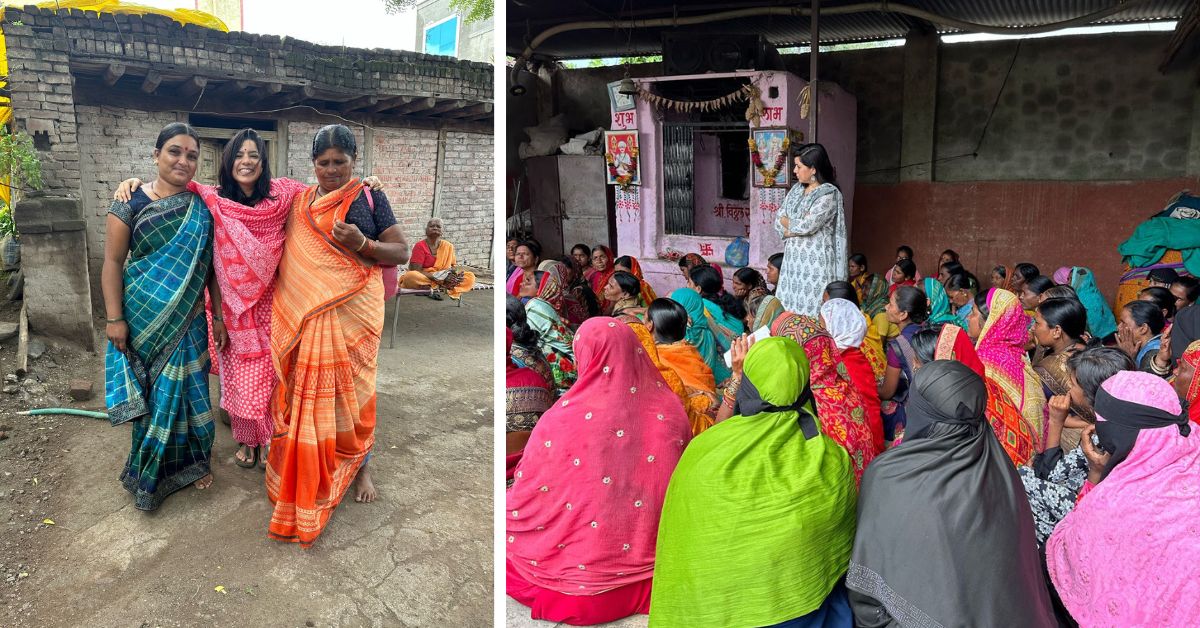 Through sit downs with the village people of Pachegaon, Rajshri Deshpande was able to disset the problems around water crisis, education and more
Through sit downs with the village people of Pachegaon, Rajshri Deshpande was able to disset the problems around water crisis, education and more
“It took me months to earn the trust of the villagers. All I did was sit and listen to them. When you listen only, then you understand, and only when you understand, you can come up with a solution,” she shares. Today, the village has enough water for the entire village for the whole year!
A similar poster story of success is that of Jairam Naik Tanda village in Gevrai Tehsil of Beed district, Maharashtra.
 The project undertaken by Nabhangan Foundation to conserve water across a 4 km stream in Jairam Naik Tanda village in Gevrai Tehsil of Beed district, Maharashtra, had an outsized impact
The project undertaken by Nabhangan Foundation to conserve water across a 4 km stream in Jairam Naik Tanda village in Gevrai Tehsil of Beed district, Maharashtra, had an outsized impact
The project undertaken by Nabhangan Foundation to conserve water across a 4 km stream had an outsized impact. The water tables rose, irrigated land grew from 36 to 404 acres, and 121 families shifted from sugarcane cutting to farming their own land.
The foundation has championed change on the ground and is now adept at doing it once again. It’s time for Pachegaon to taste the same success.
Here, Nabhangan Foundation will be working on a larger landscape of four more villages in the Pachegaon gram panchayat. In these villages, distress migration is equivalent to 1225 families migrating each year. The funds raised will be channelled into reviving a 5 km stream of Pachegaon.
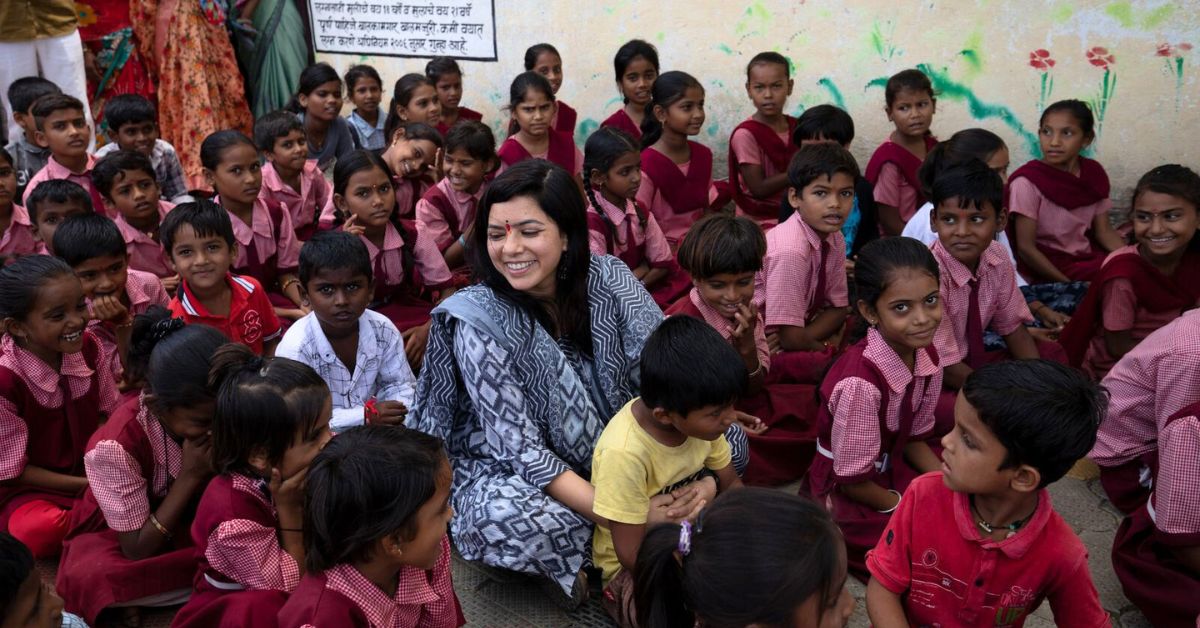 Nabhangan Foundation has worked on setting up eco-sensitive schools and skill development centres across the villages of Maharashtra
Nabhangan Foundation has worked on setting up eco-sensitive schools and skill development centres across the villages of Maharashtra
But as Rajshri emphasises, no project can exist in silos. It is part of a larger picture that includes education, health, and farming. In the past decade, Nabhangan Foundation has worked on setting up eco-sensitive schools and skill development centres across the villages of Maharashtra to amplify the accessibility of quality education to the children in these areas.
Take, for instance, the Zilla Parishad school in Pandhari, which has only two operational classrooms and lacks toilets, water, and electricity.
Following awareness sessions, which saw the villagers come together to brainstorm possible solutions, and visits to the site with subject matter experts, a strategy was formulated. Today, Pandhari School is a thriving centre where dreams are allowed to take shape.
As Rajshri emphasises, “The idea starts with water, but does not end with water. It is the beginning but not the end. Tackling this problem is not a one-person effort. It is a collaborative effort.”
Join us in our campaign; it isn’t just about reviving a water body in Pachegaon.
This is a campaign to revive hope.
Edited by Leila Badyari Castelino; All pictures courtesy Rajshri Deshpande
Sources
News